
The Nymphalidae are the largest family of butterflies, with more than 6,000 species distributed throughout most of the world. Belonging to the superfamily Papilionoidea, they are usually medium-sized to large butterflies. Most species have a reduced pair of forelegs and many hold their colourful wings flat when resting. They are also called brush-footed butterflies or four-footed butterflies, because they are known to stand on only four legs while the other two are curled up; in some species, these forelegs have a brush-like set of hairs, which gives this family its other common name. Many species are brightly coloured and include popular species such as the emperors, monarch butterfly, admirals, tortoiseshells, and fritillaries. However, the under wings are, in contrast, often dull and in some species look remarkably like dead leaves, or are much paler, producing a cryptic effect that helps the butterflies blend into their surroundings.
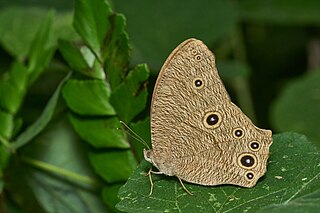
Melanitis leda, the common evening brown, is a common species of butterfly found flying at dusk. The flight of this species is erratic. They are found in Africa, South Asia and South-east Asia extending to parts of Australia.

The Satyrini is one of the tribes of the subfamily Satyrinae. It includes about 2200 species and is therefore the largest tribe in the subfamily which comprises 2500 species.

Libythea labdaca, the African snout butterfly, is a member of the butterfly subfamily Libytheinae found in western and central Africa.

Physcaeneura is a butterfly genus from the subfamily Satyrinae in the family Nymphalidae.
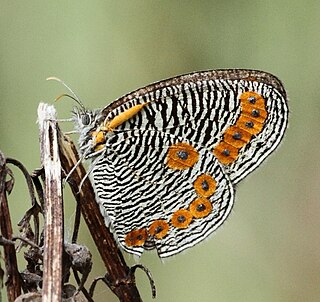
Physcaeneura panda, the dark-webbed ringlet, is a butterfly of the family Nymphalidae. It is found in South Africa, it is common and widespread in the hot dry savanna of KwaZulu-Natal, Eswatini, Mpumalanga, Gauteng, Limpopo and North West.
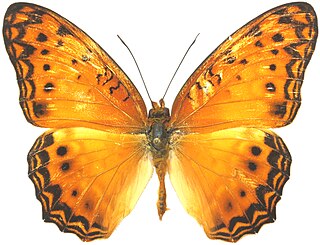
Phalanta eurytis, the forest leopard, forest leopard fritillary, or African leopard fritillary, is a butterfly of the family Nymphalidae. It is found in tropical Africa, Ethiopia, and Sudan.
Neocoenyra gregorii is a butterfly in the family Nymphalidae. It is found in Somalia, Kenya, Uganda, Tanzania, the eastern part of the Democratic Republic of the Congo and Malawi. The habitat consists of montane grassland and forest-grassland mosaic at altitudes up to 3,000 meters and open thorn-bush country and Brachystegia woodland at altitudes from 1,200 to 2,200 meters.
Neocoenyra kivuensis is a butterfly in the family Nymphalidae. It is found in the eastern part of the Democratic Republic of the Congo, Burundi, western Tanzania, Zambia and Malawi. The habitat consists of Brachystegia woodland, montane grassland on forest margins, at altitudes between 1,000 and 2,000 meters.

Neocoenyra paralellopupillata is a butterfly in the family Nymphalidae. It is found in north-eastern Tanzania and possibly Malawi. The habitat consists of montane forests at altitudes of about 2,200 meters.
Neocoenyra ypthimoides is a butterfly in the family Nymphalidae. It is found in the Democratic Republic of the Congo, Tanzania, Malawi and Zambia. The habitat consists of deciduous woodland and forest margins at altitudes between 500 and 1,800 meters.
Physcaeneura jacksoni is a butterfly in the family Nymphalidae. It is found in north-eastern Tanzania.
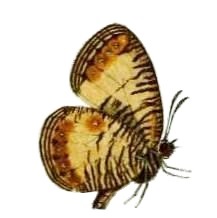
Physcaeneura pione, the light webbed ringlet, is a butterfly in the family Nymphalidae. It is found in north-eastern and western Tanzania, the Democratic Republic of the Congo, northern Zambia, Malawi, western Mozambique and eastern Zimbabwe. The habitat consists of moist savanna.
Physcaeneura robertsi is a butterfly in the family Nymphalidae. It is found in central Tanzania.

Issoria hanningtoni, the Hannington's fritillary, is a butterfly in the family Nymphalidae. It is found in Sudan, Kenya and Tanzania. The habitat consists of highland forests.

Apaturopsis cleochares, the painted empress, is a butterfly in the family Nymphalidae. It is found in Guinea, Sierra Leone, Ivory Coast, Ghana, Nigeria, Cameroon, Gabon, Angola, the Central African Republic, the Democratic Republic of the Congo, Sudan, Uganda, Kenya, Tanzania, Malawi, Zimbabwe and Mozambique. The habitat consists of forests and heavy woodland.
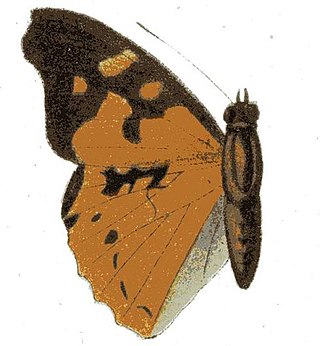
Apaturopsis kilusa is a butterfly in the family Nymphalidae. It is found in north-western Madagascar. The habitat consists of forests.
Apaturopsis paulianii is a butterfly in the family Nymphalidae. It is found on Madagascar. The habitat consists of forests.
Pseudathyma callina, the calline false sergeant, is a butterfly in the family Nymphalidae. It is found in Nigeria, Cameroon, Gabon, the Republic of the Congo, the Central African Republic, the Democratic Republic of the Congo, and north-western Zambia. The habitat consists of forests.
Neptis troundi, the constricted club-dot sailer, is a butterfly in the family Nymphalidae. It is found in Sierra Leone, Liberia, Ivory Coast, Ghana, Nigeria, Cameroon, Gabon, the Republic of the Congo and the western part of the Democratic Republic of the Congo. The habitat consists of forests.











